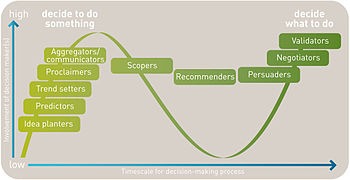As online attention becomes scarce, marketers are now looking to influencers to create thought-provoking, resonant content for their content marketing and native advertising efforts.
How does one pick an influencer?
Many platforms and tools try to identify and quantify influencer metrics such as:
- Relevance
- Reach/Audience
- Quality
- Engagement
- Activity
These metrics are typically derived by tracking the social web, and thus describe the relationship the influencer has with their own audience or following.
Key Takeaway: High reach authors may not have the ability to move their own audiences, so brands should consider paying for the content separately from the audience, and compensating for audiences variably.
Audience Sources for Top Influencer Content
While e-mail newsletters and social may have been effective at creating awareness, they were relatively ineffective at driving traffic to a branded content destination above and beyond a base level of around 500 uniques/month.
Key Takeaway: Promotional permanence is what drives outsized results, which means alignment is critical.
Creating alignment between the marketer and the influencer is critical.
Alignment is what gets the author excited enough about their work to put their name on it, claim authorship in Google, promote it to their own audience, and establish permanent links from their own owned media.
Influencer-based content creation (as opposed to “brand journalism”) is also persistently challenged by its close association with the practice of “blogger outreach”, where some degree of “shilling” by bloggers was expected.
Key Takeaway: Crafting an influencer program that fails to account for intangible incentives is likely doomed to failure – or low ROI.
Source blog.newscred.com/article/influencer-unicorns-what-three-years-of-data-tells-us-about-picking-influencers
